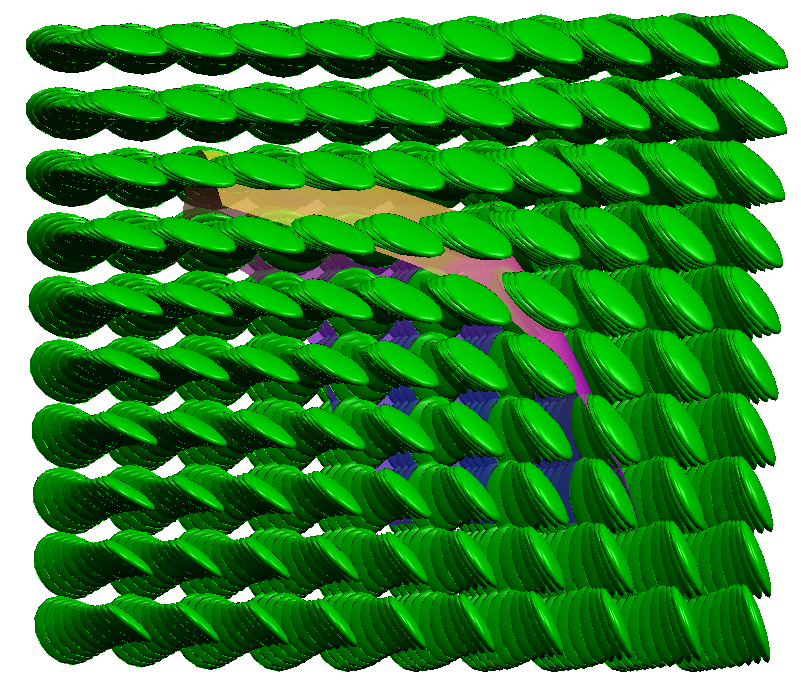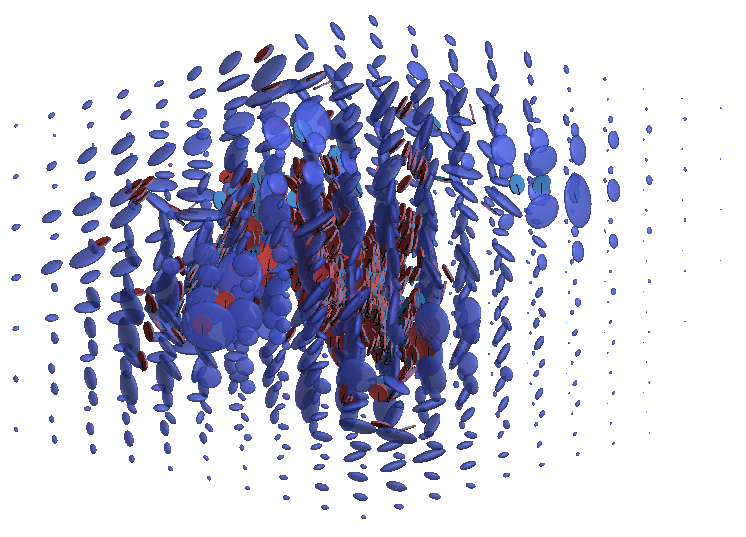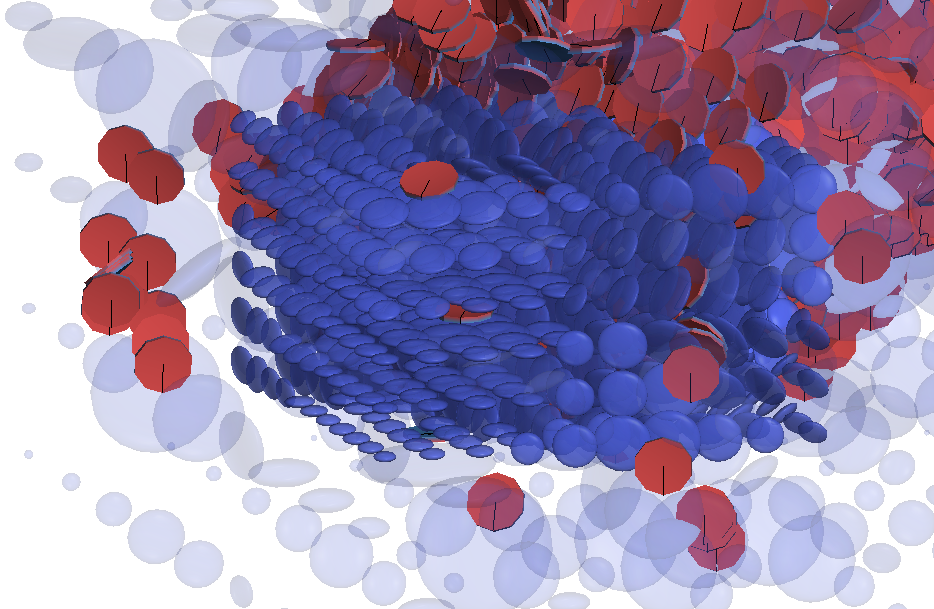Structural Trends
Structural trends can be applied when there is a gradual shift in the direction of the continuity that precludes the use of a global trend, perhaps due to flows.
A structural trend localises trend modelling to indicate changes in direction of continuity. A variety of inputs can be used to inform a structural trend: structural data disks or lineations, a mesh surface, or triaxial trend ellipsoids imported from Driver. The resulting structural trend is a continuous function that can determine, for any given point of interest, the trend orientation and magnitude specific and appropriate to that location.

When displayed in the scene, the structural trend is rendered as a grid of oblate ellipsoids. The orientation of the disk gives the direction of the anisotropy. The size of a disk is proportional to the anisotropy strength.
The above scene depicts the result when the structural trend is a Non-decaying type. Because the strength of the trend does not decay, all the ellipsoid disks are the same size but may point in different directions.
You can also select a structural trend type with an effect that decays toward a general background trend:

Where there are no ellipsoids or very small ellipsoids, the trend is isotropic.
Structural trend ellipsoids are a discrete visualisation of the continuous structural trend function, depicting the strength and direction of the anisotropy at specific defined locations. The visualisation grid can be changed to visualise the function in space at the desired granularity or resolution. In this example, a smaller extents region was also specified to limit the high resolution spacing to a specific area:

